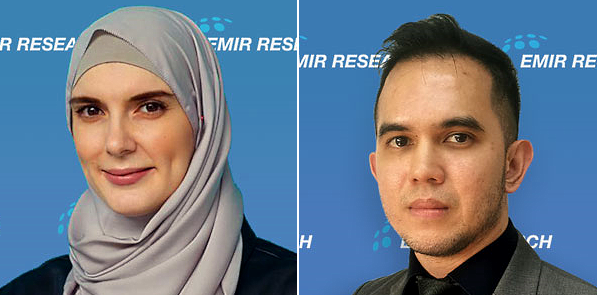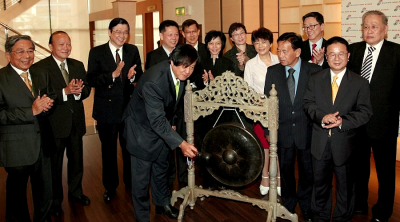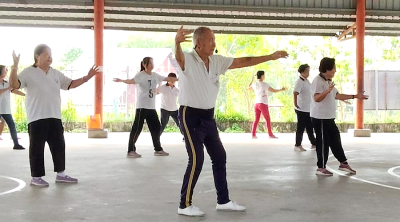By Dr Margarita Peredaryenko / Ameen Kamal

Unfortunately, repeat clusters show that simply trusting industries and people (and even politicians) to manage and self-enforce standard operating procedures (SOPs) are not reliable.
At the same time, we can't be in a state of total lockdown forever, but we can't simply loosen restrictions entirely either, especially when our percentage of the vaccinated population is still relatively low (though it is picking up considerable pace).
A balance between strict lockdowns and full relaxation of movement restrictions can be achieved through a technology-powered mass testing, tracing and isolation.
The need for increased testing is aligned with the call by experts, including the Director-General (DG) of Health, Tan Sri Dr Noor Hisham Abdullah and Dr Kumitaa Theva Das, senior lecturer at the Infectomics Cluster, Advanced Medical and Dental Institute (AMDI), Science University of Malaysia.
Both experts pointed to the need for increased testing to isolate cases, and mentioned the use of saliva-based test kits that can be used at home.
The prerequisites for an effective self-test kit are speed, sensitivity, specificity, cost, and ready availability for the masses.
The Health DG did reportedly mention that the saliva-based test kit had a sensitivity "above 90%", but specificity was not mentioned. Both the specificity and sensitivity of symptomatic and asymptomatic rates are not known.
However, we can refer to potential figures based on a saliva-based test kit launched by Indonesia's largest pharmaceutical company, Kalbe Farma, whereby a 94% sensitivity and 98% specificity (achieved in clinical trials) was mentioned during a press conference.
In any case, the "above 90% sensitivity" may be sufficient for quelling infections through mass detection and isolation in the near timeframe given that it is accompanied by an increasingly vaccinated population in the background.
Also, it's likely that the apparent background of high disease prevalence would push up the positive predictive value. In other words, there's a high chance the positive cases are true positives.
In further addressing "escapes", testing has to be wide and frequent. Studies [1],[2] on mass testing effectiveness in Slovakia indicate that mass testing may need more than just one round to make a difference before a decrease in infections and R-naught was observed.
Furthermore, multiple-round testing addresses the fact that test results depend on the stage of a certain person's post-exposure to the virus and the type of test used.
One important consideration for wide and frequent tests is, of course, costs. Home test kits – as explored by the authorities – may overcome traditional issues related to centralized testing such as sample logistics, but it has to be cheap enough.
That said, it has been reported that industries appear to be complaining about costs of antigen tests (which is a far cheaper alternative than RT-PCR), which raises concern about the affordability for mass dissemination of these home test kits.
The Health DG pointed that the tests should be focused on detecting and isolating low-risk positive cases. He reportedly mentioned that Category 1 (no symptoms) or Category 2 (mild symptoms) cases make up about 80% of the positive cases and that isolating these cases can reduce community infections.
Though the World Health Organization (WHO) interim guidance on "Recommendations for national SARS-CoV-2 testing strategies and diagnostic capacities" dated June 25 this year suggest only to test asymptomatic contacts of confirmed or probable cases (including health care workers) while other asymptomatic cases are not recommended to be tested, this could result in many detection escapes that might still be moving in the community to continue infecting others – risking to undo the entire mass testing and isolation efforts.
A study in the UK found that the proportion of asymptomatic carriers in the population to be quite substantial (between 28% to 90%), whereby the 80% value mentioned by the Health DG appear to fall within this range. However, the sequence of prioritization by the WHO could be followed in that the testing should prioritize clusters (workplaces, construction sites, factories etc.) alongside strict implementation (monitoring and enforcement) of SOPs. This can then be followed by the rest of the population, according to suggested prioritization under the WHO guideline.
Needless to say, the use of home-based test kits raises valid concerns about the proper use of the kit, and most importantly, proper actions by the public.
There must be a credible way of reporting and verification of test results.
Therefore, the widespread general practitioner (GP) clinics and pharmacies may be empowered to provide rapid testing and reporting.
Thus, individuals can immediately receive test result validation with a QR code at these places, that could be scanned by MySejahtera to update the testing status of the person.
While following testing prioritization, asymptomatic cases may still need to be detected and isolated for a sustainable reduction in transmission, as pointed out by the Health DG.
However, we are mindful of potential resource constraints, by which the WHO interim guidance provides recommendations on how testing should be prioritized.
Therefore, to complement the mass testing arm, we need a wider and faster contract tracing. This is where we may want to revisit our digital contact tracing effort initiated by the Ministry of Science, Technology and Innovation (Mosti) back in May 2020 with the MyTrace app.
Some countries that embarked on this initiative eventually abandoned it. However, the successful ones have discovered that mobile app-based contact tracing can be essential to work with their manual contact tracing systems.
Manual tracing can detect the known exposures, while its digital arm ensures speed and coverage of non-obvious encounters—strangers who happened to be in very close proximity as determined by Bluetooth low-energy (BLE) tech.
These application types started making waves early in 2020. MIT Technology Review even created Covid Tracing Tracker to document the efforts worldwide and review the success and failures so that the global community can learn and improve.
"It does not work" versus "how to make it work" attitude consistently differentiates success and failure.
To work effectively, these apps do not need to be adopted by the majority. We need to stop "it is all or nothing" thinking. Every case detected early matters as potential sources of further transmission chain can be nipped in the bud.
Successful countries such as, for example, Germany and Ireland, have made their apps' code open source to ward off privacy concerns. On top of that, they increase the community outreach to educate critics and skeptics on how the app works and its importance through constant media campaigns.
The successful initiatives must be accompanied by clear, publicly available policies with regards to data storage and use limited to public health.
Interestingly, although all countries initially tried to build their own functionality around BLE signatures on mobile devices, the successful ones quickly switched or at least combined it with the application programming interface (API) to the Apple-Google exposure notification system.
Although the Apple-Google system may offer an alternative way of exposure assessment, to date it does share important insights into how COVID-19 is spreading with public health officials.
Although Apple-Google APIs do take away the burden of development, we still need to set the parameters right—being "how far" and "how long" should be considered an exposure. Even with express tests massively available, false alerts would not be a big problem. Furthermore, once the app has been running for a few weeks, the parameters can be optimized.
Singapore's Bluetooth-enabled wearable token working with its TraceTogether app is another idea worthy of exploring to expand digital contract tracing to individuals without a mobile device. Therefore, TraceTogether is now a single mandated platform for check-ins in public places nationwide. This could be coupled with new on-site detection technologies such as breathalyzers that may be better at detecting asymptomatic individuals who would otherwise not be detected by temperature scanners.
The fact that the TraceTogether app and token utilize digital proximity tracing (via Bluetooth) increases the reach and speed of contact tracing, which has always been a critical contributor to Singapore's success.
Perhaps, we too do not need a siloed app but use the MySejahtera app while enhancing it with BLE/APIs enabled exposure tracing.
Of course, mass test-trace efforts need to be further strengthened by self-isolation. Some countries experimented with random location checks via "share my location" and other more privacy-invasive technology gimmicks.
However, do we need to go that far if we all can exercise our civic responsibility? After all, even the best strategic effort can always fail without healthy goodwill from the public.
The rakyat's exhaustion is a vast understatement.
However, as much as the rakyat would probably like to punish all the irresponsible leaders with mistrust and ignorance, this is not the right time to do so.
Right now, we need to provide all our trust, support and cooperation for the sake of those few who do try their best to stop this pandemic, including our exhausted health frontliners.
(Dr. Margarita Peredaryenko and Ameen Kamal are part of the research team of EMIR Research, an independent think tank focused on strategic policy recommendations based on rigorous research.)
ADVERTISEMENT
ADVERTISEMENT


































